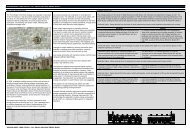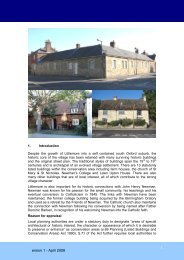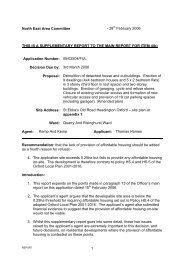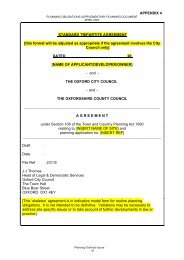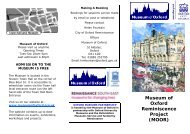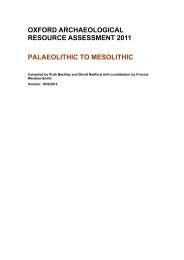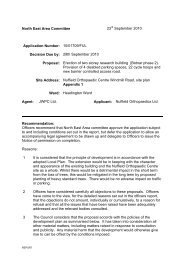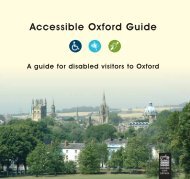Post-medieval Oxford - Oxford City Council
Post-medieval Oxford - Oxford City Council
Post-medieval Oxford - Oxford City Council
Create successful ePaper yourself
Turn your PDF publications into a flip-book with our unique Google optimized e-Paper software.
occupation throughout the post-<strong>medieval</strong> period. Here, a 16th, early 17th century pit<br />
contained seeds of black mulberry, fennel and figs suggesting the user enjoyed more<br />
than a subsistence diet (Hassall, Halpin and Mellor 1984: 161-5).<br />
In the early 17th century, the vacant space between the two frontage structures was<br />
in-filled with a stone footed building. In the late 17th century, this single tenement<br />
may have been subdivided and a series of wells and stone lined pits appear behind<br />
the now continuous row of dwellings. One stone lined pit produced a remarkable<br />
assemblage of finds including metalwork, glass bottles and pottery. Other pits<br />
contained ivory off cuts, possible evidence for comb manufacture, a bone off cut,<br />
possible evidence for button making and horse equipment.<br />
From the mid-17th century, No 31 was associated with a malt house extending to the<br />
west. In the 18th century, this plot was divided into two small tenements replacing the<br />
malt house. An 18th century pit at the rear of No 34 contained a fine group of<br />
decorated creamware and fruit seeds including grape, raspberry, strawberry and<br />
plum. Another stone lined pit contained 18th-19th century assemblages of<br />
creamware and pearlware plates (Mellor and Oakley 1984: 181-221).<br />
OXFORD ARCHAEOLOGICAL RESOURCE ASSESSMENT- POST MEDIEVAL<br />
14



